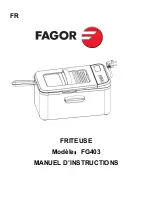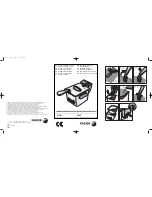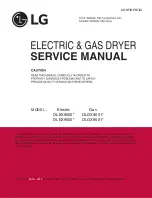
15
NOTE
: Where the exhaust duct work passes through a wall, ceiling, or roof made of combustible
materials, the opening must be 2-inches larger (all the way around) than the duct. The
duct must be centered within this opening.
a. Outside Duct Work Protection
1) To protect the outside end of horizontal duct work from the weather, a 90° elbow bent downward
should be
installed where the exhaust exits the building. If the duct work travels vertically up
through the roof, it should be protected from the weather by using a 180° turn to point the opening
downward. In either case, allow at least twice the diameter of the duct between the duct opening and
the nearest obstruction.
IMPORTANT
: DO NOT use screens or caps on the outside of opening of exhaust duct work.
2. Single Dryer Venting
Where possible, it is suggested to provide a separate exhaust duct for each dryer. The exhaust duct should
be
laid out in such a way that the duct work travels as directly as possible to the outdoors with as few turns
as possible. It is suggested that the use of 90° turns in the ducting be avoided; use 30° and/or 45° angles
instead. The shape of the exhaust duct work is not critical so long as the minimum cross section area is
provided.
IMPORTANT
: Minimum duct size for a dryer that is vented horizontally is 10-inches for a
round duct or an equivalent of 80 square inches. THE DUCT SIZE MUST
NOT BE REDUCED ANYWHERE DOWN STREAM OF THE DRYER.
IMPORTANT
: Exhaust back pressure measured by a manometer at each basket (tumbler)
exhaust duct area should not exceed 0.3-inches of water column.
IMPORTANT
: Minimum duct size for a dryer that is vented vertically is 12-inches for a round
duct or an equivalent of 120 square inches. THE DUCT SIZE MUST NOT
BE REDUCED ANYWHERE DOWN STREAM OF THE DRYER.
Содержание Gas/Electric/Steam AD-75HS
Страница 21: ...17 ...
Страница 76: ...ADC113039 1 09 01 98 253 ...
















































